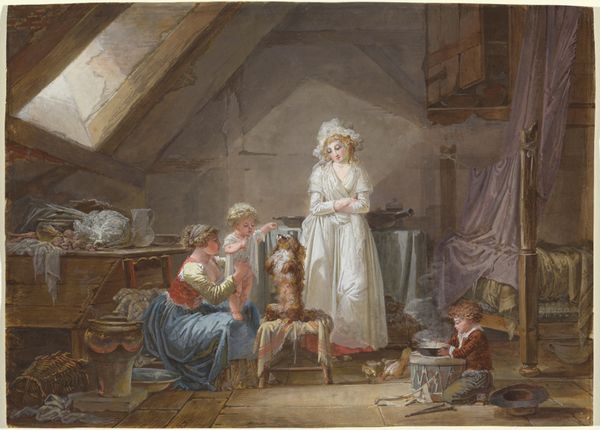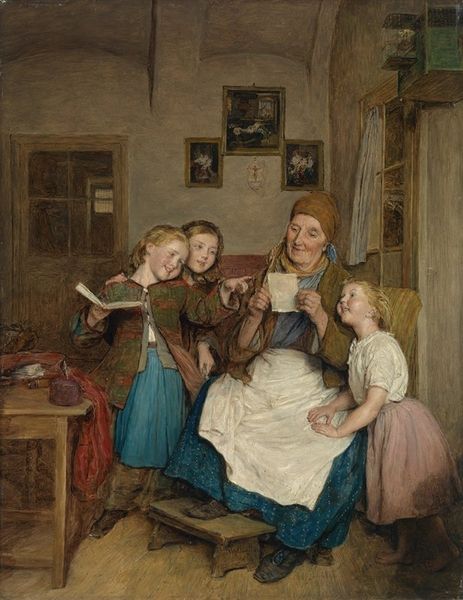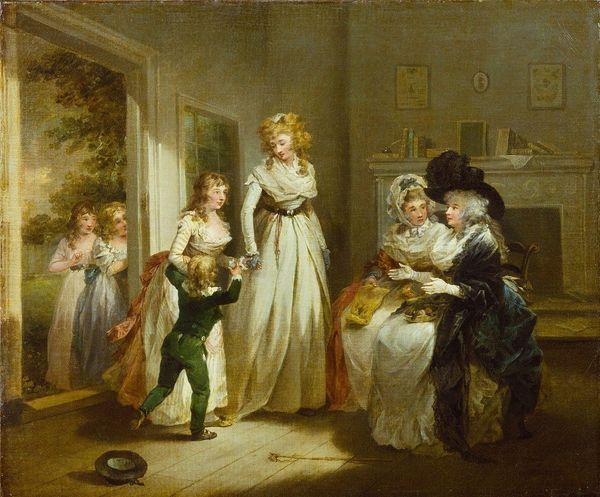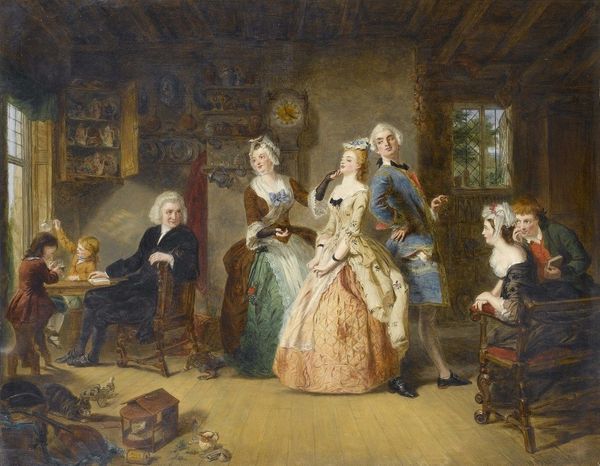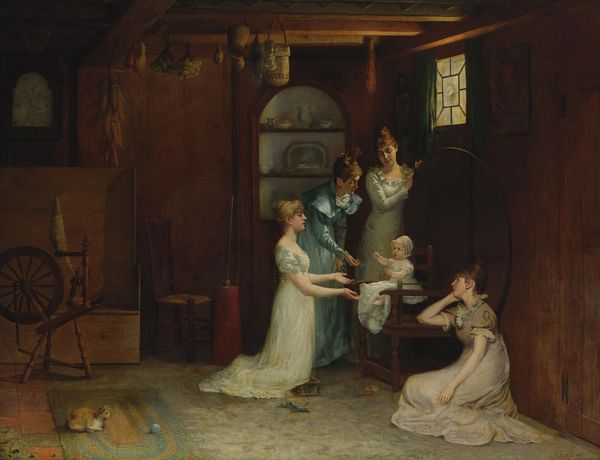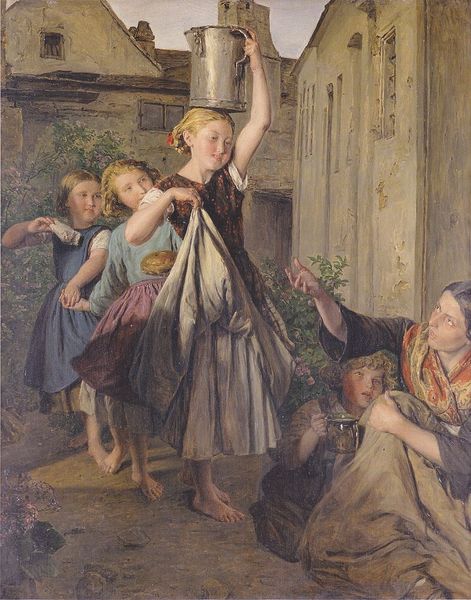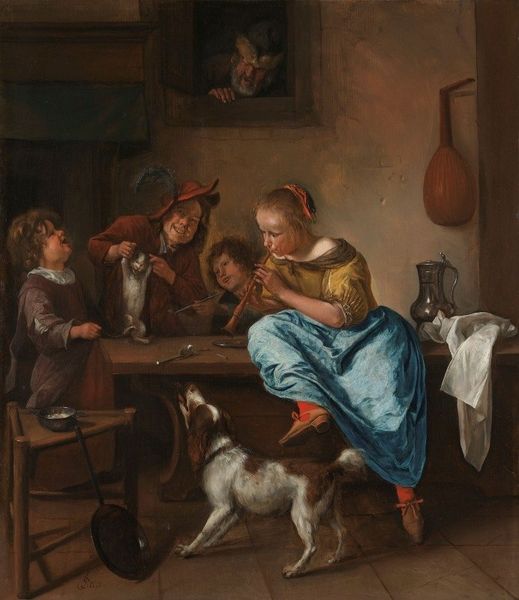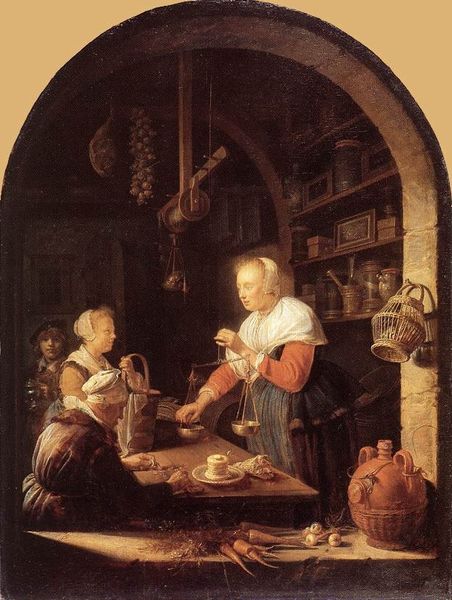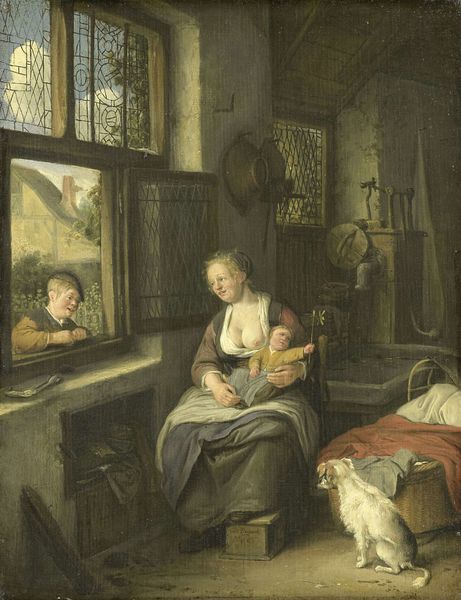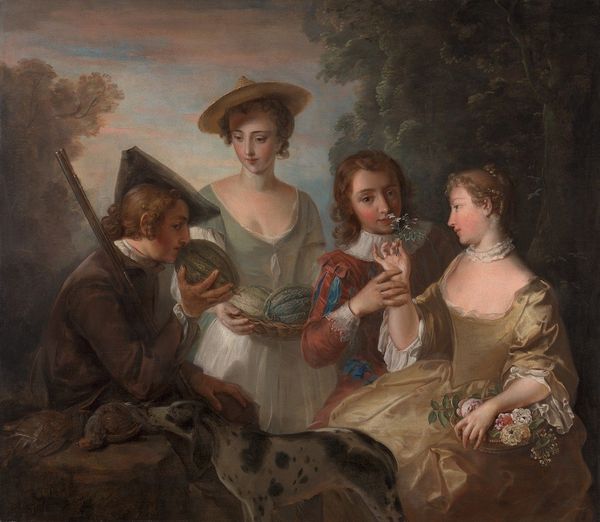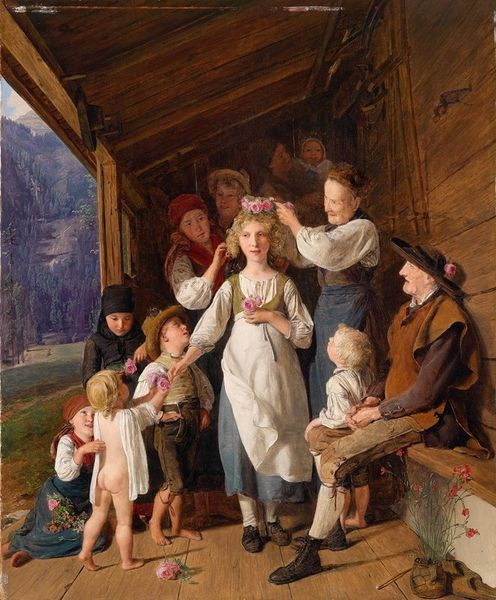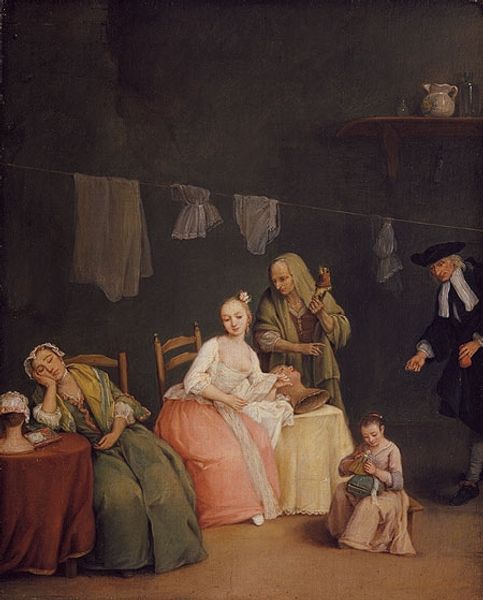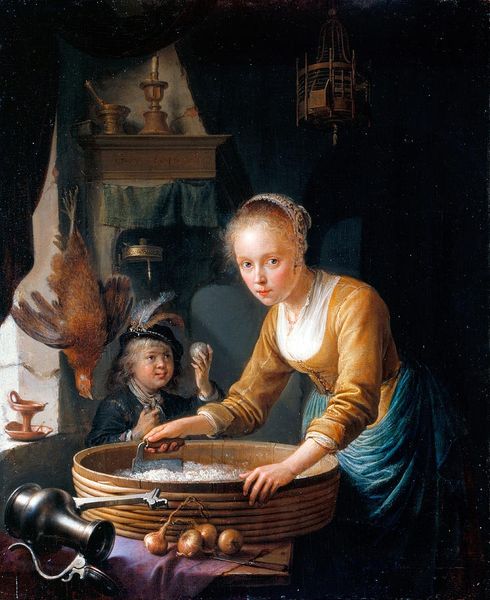
Copyright: Public domain
Curator: Let’s take a closer look at “Singing Children,” painted in 1858 by Ferdinand Georg Waldmüller, employing oil paint in a genre scene framed in the style of romanticism. Editor: What strikes me is how effectively Waldmüller uses light here; the single light source gives this rather common scene a serene yet somewhat unsettling feeling. There’s such soft gradations of colour—primarily warm tones, golds, yellows, browns—making a cohesive whole. Curator: The means of production during Waldmüller's time often catered to middle-class desires for sentimental representations of domestic life. Romanticism allowed these sentimental portrayals, but I wonder about the labor. Where are the parents? Editor: True, the lack of adult presence creates a certain tension; this element introduces, as you imply, a broader social context relating to who controls labour in general in 19th-century Austria. But to return to the work itself, consider the composition: the arrangement of the figures almost suggests a pyramidal structure, creating an interesting geometric foundation to what would initially look to be haphazard. The lighting also acts as the work's unifying element. Curator: Agreed. The single point of illumination creates strong highlights that accentuate forms but I keep wondering about the social ramifications of this piece. Does it endorse an idealization of childhood innocence disconnected from the harsh realities of labor and poverty? Editor: Perhaps. But maybe there's a deeper investigation here, or simply a snapshot into one happy moment, framed using painterly skill to tug on heartstrings through an examination of formal means such as composition and controlled gradation of light, without getting caught up in material conditions of the artwork. Curator: Alright. Even if there's an undeniable compositional beauty, remembering the historical setting adds extra richness to this work's interpretation, leading us to consider both form and background of art, ultimately deepening one's connection to this canvas. Editor: Very good point. By discussing art—from surface appearance to possible social and contextual interpretations—I see how varied perspectives enrich our encounter.
Comments
No comments
Be the first to comment and join the conversation on the ultimate creative platform.
